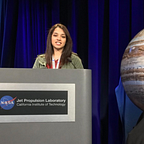Telescopes of the World: the Keck Observatory
Keck is located atop the volcano Mauna Kea in Hawaii
The two telescopes on the tallest mountain in Hawaii that make up the Keck Observatory are the world’s largest and most productive optical and infrared telescopes. Each telescope weighs 300 tons (over 2,70,000 kg).
The Keck telescopes have a great advantage. Mauna Kea rises over 4,000 meters above the sea. It is in the middle of the Pacific Ocean, surrounded by nothing but water. There are no other mountain ranges nearby blocking views; neither are there cities pouring in light pollution. The atmosphere is also clear of dust. Keck is one of the best places for observation on earth.
This does not mean that the images observed are perfect. All telescopes on earth are affected by earth’s layers and layers of atmosphere that have their own flow patterns. As we now understand the atmosphere enough to predict and detect them, we can build checks in place that will compensate for these errors in readings. This technique is called Adaptive Optics. AO measures and then corrects the atmospheric turbulence using a deformable mirror that changes shape 2,000 times per second. The Keck II telescope was the first in the world to be fitted with the AO system.
The telescopes’ primary mirrors are 10-meters in diameter and are each composed of 36 hexagonal segments that work in concert as a single piece of reflective glass. The telescope tracks a single object for hours and sometimes even days by following its movement across the sky. Adjustments to this motion of mirrors can be made in terms of nanometers!
According to Keck’s website, Keck Observatory’s legacy of exploration has contributed to all areas of astronomy and astrophysics — the discovery of exoplanets; the study of how planets, stars and galaxies form; the nature of black holes; and the chemical composition and evolution of the Universe.
